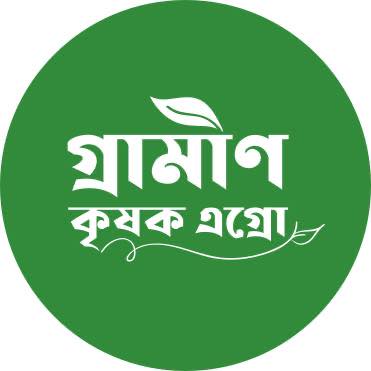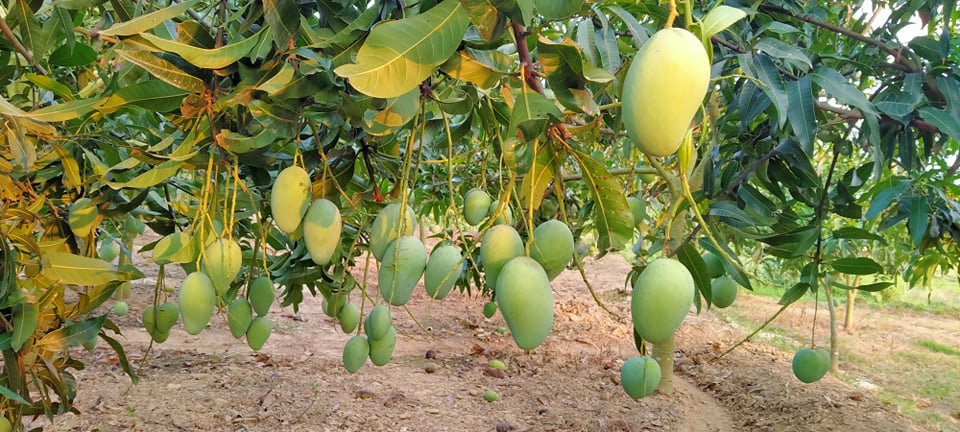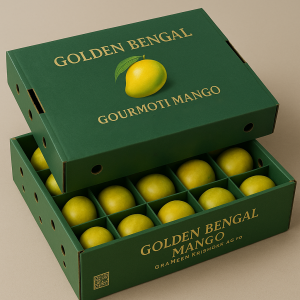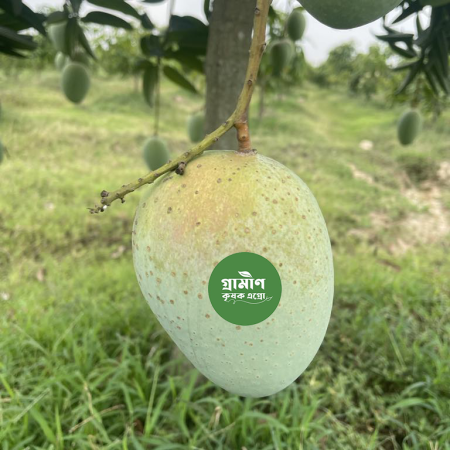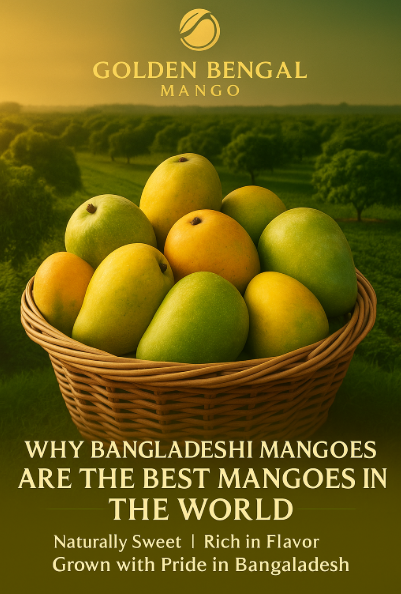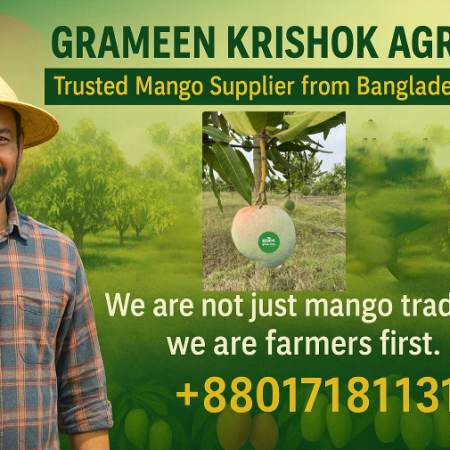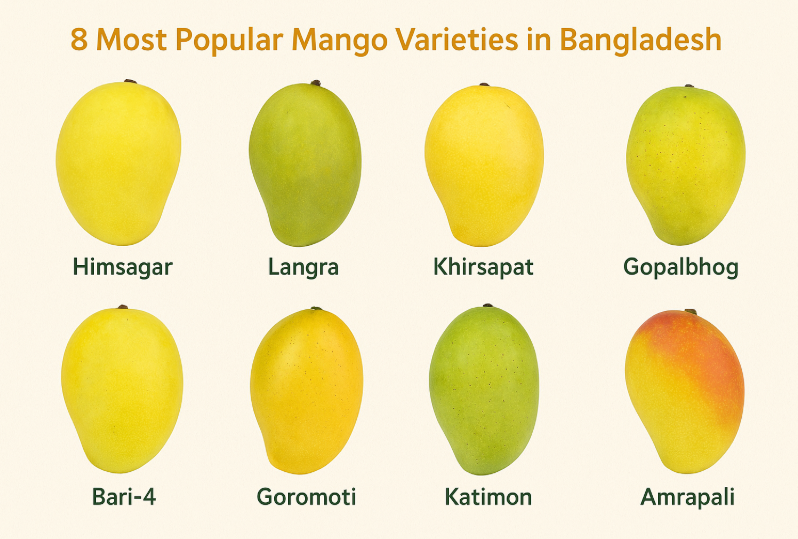
The Pride of Bangladesh: Exploring the 8 Most Popular Mango Varieties
Introduction
Mango, often referred to as the “king of fruits,” holds a special place in the hearts and culture of Bangladesh. Known for its lush green orchards and ideal climate, Bangladesh is home to some of the finest mango varieties in the world. The mango season, usually stretching from May to August, becomes a time of celebration, trade, and deep-rooted connection to the land. Among the countless varieties grown in the country, eight stand out for their popularity, flavor, aroma, and cultural importance. These are: Himsagar, Langra, Khirsapat (also known as Fazli), Gopalbhog, Bari-4, Goromoti, Katimon, and Amrapali.
This article explores each of these celebrated mangoes — their origins, characteristics, flavor profiles, cultivation regions, and their significance in Bangladesh’s agricultural and cultural landscape.
1. Himsagar – The Royal Mango of Chapainawabganj
Origin: Naogaon, Sapahar and Chapainawabganj, Rajshahi Division
Season: Mid-June to early July
Flavor Profile: Sweet, juicy, fiberless pulp with strong aroma
Himsagar mango is one of the most prized and premium mango varieties in Bangladesh. Often called the “king of mangoes” in the local context, Himsagar has gained national fame due to its distinct taste, fiberless texture, and excellent shelf life. Its flesh is deep orange, with a smooth texture that melts in the mouth. Weighing about 250–350 grams, it is a top choice for mango lovers and exporters alike.
Himsagar is extensively cultivated in the northwestern districts, especially Chapainawabganj, known as the mango capital of Bangladesh. The variety is highly sought after in both domestic and international markets and plays a significant role in the mango export economy of the country.
2. Langra – The Heritage Mango of Rajshahi
Origin: Sapahar, Naogaon and Chapainawabganj, Rajshahi
Season: Early June to mid-July
Flavor Profile: Pungent aroma, sweet and tangy taste, fibrous
Langra mangoes are among the oldest and most traditional mangoes of the region. With a rich history dating back several hundred years, Langra continues to captivate mango enthusiasts with its unique taste and aromatic flesh. This variety gets its name from a folklore about a disabled (langra) farmer who first cultivated it.
Langra mangoes are medium-sized, oval-shaped, and green even when ripe. The pulp is slightly fibrous, yet juicy and rich in flavor. It’s a favorite for traditional mango dishes and chutneys and has high nutritional content. This mango is known for its digestive benefits and is cherished in rural households as a healing fruit.
3. Fazli – The Giant of Mangoes
Origin: Sapahar, Naogaon and, Chapainawabganj, Rajshahi
Season: Late June to July
Flavor Profile: Moderately sweet, light aroma, soft flesh
Khirsapat, also known in the market as Fazli, is one of the most widely cultivated mango varieties in Bangladesh. It is appreciated for its large size, sometimes weighing up to a kilogram, and extended shelf life. Fazli mangoes are perfect for both table consumption and for making mango pulp, pickles, and juices.
Unlike Himsagar or Langra, Fazli is slightly less sweet, which makes it more versatile in culinary uses. Its balanced taste and soft pulp make it a favorite for urban and export markets. Due to its economic importance, the government has taken initiatives to promote Khirsapat mangoes for export under GI (Geographical Indication) tagging.
4. Gopalbhog – The Early Delight
Origin: Chapainawabganj, Rajshahi
Season: Late May to mid-June
Flavor Profile: Sweet, juicy, fibrous pulp
Gopalbhog is among the earliest ripening mangoes in Bangladesh. Its early arrival brings much excitement to mango enthusiasts eager to get a first taste of the season. Named after a local farmer named Gopal, this mango has a devoted fanbase for its fragrant pulp and satisfying taste.
The mango is medium-sized, slightly oval, and has a greenish-yellow skin when ripe. Though it contains some fibers, its juicy nature makes it perfect for eating raw or in mango salads. Farmers appreciate Gopalbhog for its early market value, as it allows them to earn before the peak season hits.
5. Bari-4 – The Modern Marvel
Origin: Developed by Bangladesh Agricultural Research Institute (BARI)
Season: June to July/August
Flavor Profile: Sweet, low fiber, uniform size
Bari-4 is a relatively recent addition to Bangladesh’s mango diversity. Created by the Bangladesh Agricultural Research Institute, it was bred to meet both commercial and consumer needs — a high-yielding, disease-resistant, and consistent variety. Bari-4 is increasingly becoming popular in commercial orchards due to its excellent shelf life and regular fruiting.
Its flesh is deep yellow with minimal fiber, and the taste is sweet and clean. Bari-4 mangoes maintain a beautiful uniform shape and color, making them ideal for display and marketing. Farmers are encouraged to plant Bari-4 for commercial benefits, and it has been adopted widely across different agro-zones.
6. Goromoti – The Traditional Gem
Origin: Southern districts including Khulna, Barisal
Season: July to August
Flavor Profile: Aromatic, intensely sweet, medium fibrous
Goromoti is an indigenous mango variety known for its strong aroma and unique taste. Though not as widely commercialized as others, it remains a treasured variety in rural households and regional markets. The mango’s name comes from the combination of “goro” (heat) and “moti” (pearl), suggesting its arrival during the peak heat of summer and its pearl-like quality.
Goromoti mangoes are medium-sized, slightly flattened, and typically yellow-orange when ripe. Its rustic charm lies in its natural sweetness, which is often described as nostalgic and earthy. Many traditional Bengali recipes, including mango-based desserts, use Goromoti as a base due to its rich flavor.
7. Katimon – The Off-Season Superstar
Origin: Thailand (Introduced to Bangladesh)
Season: Almost year-round (multiple harvests)
Flavor Profile: Sweet, mildly tangy, aromatic
Katimon is an exotic variety originally from Thailand that has recently gained immense popularity in Bangladesh, especially in high-tech mango farming. What makes Katimon stand out is its ability to bear fruit multiple times a year, including off-season months. This off-season production is especially profitable for farmers using modern agricultural practices like bagging and greenhouse farming.
The mango is small to medium-sized, greenish-yellow, and highly fragrant. It is fiberless, juicy, and very sweet. Katimon is increasingly being grown in Bogura, Natore, and Dhaka outskirts, and is often found in premium fruit markets due to its consistent availability.
8. Amrapali – The Hybrid Wonder
Origin: A hybrid of Dasheri and Neelum (India), now cultivated in Bangladesh
Season: Late July to August
Flavor Profile: Sweet, pulpy, dark orange color
Amrapali is another modern hybrid mango that has been successfully adapted to the climate and soil of Bangladesh. Created by Indian agricultural scientists, it is a cross between Dasheri and Neelum, combining the best features of both. Amrapali mangoes are popular for their late harvesting period, coming in when most other varieties are finishing.
Amrapali mangoes are small to medium-sized, highly pulpy, with a deep reddish-orange flesh. They are best consumed fresh and are also great for making mango smoothies and preserves. Due to its manageable size and tree height, Amrapali is a favorite among rooftop and backyard gardeners in urban areas.
Mangoes in the Culture and Economy of Bangladesh
The importance of mangoes in Bangladesh goes far beyond taste. It is woven into the country’s economy, seasonal traditions, rural livelihoods, and identity. Every year, the mango trade generates millions of taka in revenue, supports hundreds of thousands of farmers, and opens export opportunities in Europe, the Middle East, and East Asia.
Festivals like the Mango Fair in Rajshahi and Mango Day celebrations in Chapainawabganj honor this beloved fruit. Online mango delivery businesses, particularly after the COVID-19 pandemic, have made these premium varieties accessible to consumers in Dhaka, Chattogram, and beyond.
Conclusion
Bangladesh is truly a mango paradise. Each of its famous varieties — Himsagar, Langra, Khirsapat, Gopalbhog, Bari-4, Goromoti, Katimon, and Amrapali — tells a story of history, science, culture, and taste. From ancient traditions to modern innovations, mango farming in Bangladesh is a reflection of the country’s love for the land and its people’s deep-rooted connection to agriculture.
As global appreciation for natural and organically farmed fruits grows, Bangladeshi mangoes are poised to take center stage on the world fruit map — not just as a product, but as an ambassador of taste, tradition, and tropical excellence.
